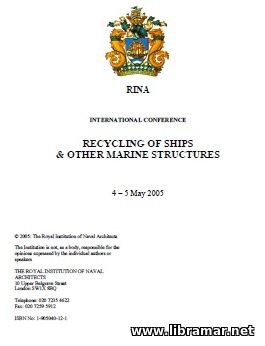 The present compendium contains all technical articles that have been introduced by various reporters during the International Conference held by RINA in 2005. Among important topics covered there are important Regulatory Matters, i.e. National and International Regulations as well as various relevant Industry Guidelines and Voluntary Codes of Practice, The Implementation and Safety Issues relating to the Green Passport, and putting necessary procedures into Practice, The Standard Contract for Ship Recycling; Ship Recycling in different countries — economic and environmental aspects, Assessment of the Future Demolition of Ships Utilizing Artificial Intelligence; HSE matters in Shipbreaking, Facilities for Safer Ship Dismantling, and many more.
This publication starts with the first section addressing the applicable regulatory matters and guidelines. Apart from the general introduction, it addresses both mandatory and voluntary provisions together with their application and further enforcement, describes the reporting system being considered within IMO, touches the matters of buying and selling, provides the basic information on the Basel Convention including the issues relating to the applicability of this Convention to vessels.
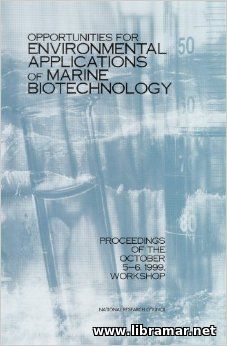 This informative volume contains all materials of the international workshop that was held in 1999 by the NRC (National Research Council) - they were collected in order to summarize the data and discuss the significance of the role of marine bio-technology in the prevention of the marine environment degradation together with its restoration and remediation. Each of the participants of that scientific event touched the current situation and tried to highlight the real research needs.
Among the important topics discussed by the speakers there were restoration of coral reefs, negative impact of heavy metals, possible strategies for prevention or at least inhibition of bio-film development, oil spill remediation etc. They have also tried to check the most important gaps in the technical knowledge possessed by the marine science community. These proceedings have been very carefully reviewed by the respected industry experts chosen for their remarkably diverse perspectives as well as prominent technical expertise as per with the established procedures.
It is definitely suggested that this set or technical documents is checked by every person involved or interested in the marine environment protection, because of the quality and up-to-dateness of information contained.
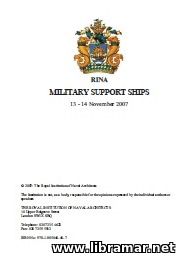 Here is a brief contents of the publication - the articles selected for inclusion into this compilation cover such interesting and practical topics as the development of heavy RAS, the future of the replenishment at sea, new concepts for fleet tankers - explorations into pricing and available options, cost effective and pragmatic environmental management of support vessels, twenty-first century support ships, the modular support ships considered as one low-cost answer to numerous needs, research and tool development applied to the support oh high-speed sealift concepts, automatic cargo handling, stern landing vessels, naval design through the innovative concepts of the sea-basing logistic support, application of the system engineering to UNREP design, landing craft motions in a flooded well dock and associated effect of well dock design, dynamic positioning and tracking onboard the Bay class LSD. The first of the documents provides some general information on the strategic context of the UK Royal Navy, followed by the equipment programme, some words about the current maritime environment and major naval assets, new platforms and introduction of the MARS programme...
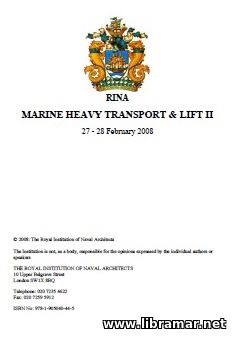 The compendium of the reports presented in the course of the MHT (i.e. Marine Heavy Transport) and Lift international conference held by RINA in 2008. The issues addressed by the speakers included strength and deflection as the design aspects of HL multi-purpose ships, a number of case studies of ocean transportation using the SafeTrans simulator and float-over installation in West Africa plus operations using DP-vessels, subsea heavy lifting, efficient and accurate methods of hydrodynamic analysis for offshore discharge operations, risk management and so many more...
The first article in the publication tells about the world's largest mono-hull HLV (heavy-lift vessel) equipped with the single mast crane - Nordic HLV Borealis - this vessel is currently considered a solid and quite innovative solution for today's market requirements. Among the features of this remarkable masterpiece there are large deck available on the main deck, ability to mobilize quickly, excellent motion behavior and dynamic positioning capability; in addition, it offers the flexibility to accommodate any additional piece of equipment on board, making this unit so versatile for the deepwater installation market. Subsea and surface lifts can be accommodated in a very cost effective way...
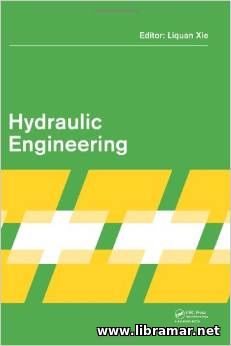 CHE 2012, i.e. Conference on Hydraulic Engineering was held with the intention of the organizers to showcase the challenging and very exciting developments that occur in the field of hydraulic engineering; in addition to that, it shall serve as a major meeting point for the hydraulic engineers, scientists, researchers and manufacturers of the related equipment, creating the opportunity for them to share the latest advances, discuss various technical problems, and identify all challenges that are associated with the engineering applications.
The present compilation consists the papers presented during the conference. Among the topics covered during that event, there were characteristics of the UTF (uniform turbulent flow), burst detection in specific water distribution systems, multidimensional regulation schemes applied to water cycle systems - guidance of their evaluation and selection, neural network application to flood forecasting, longitudinal dispersion that is caused by vertical shear occurring in ice-covered rivers, train load effect and water coupling effect to track crack growth, water logging and flood storage control, water temperature simulation, spatial decision support systems, energy dissipation, influent water quality of the waste water treatment plants and so many other practical topics.
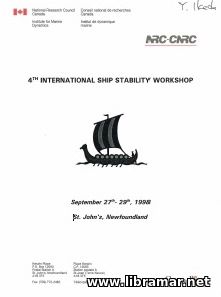 Since the very date of its foundation in 1995, the Ship Stability Workshop has provided the industry experts with the excellent opportunities to gather together and also present the very latest research results. The present Workshop is intended to give some sort of overview of the current situation and the discussions that have been developed from technical presentations is forms a part of the meeting.
These notes are sort of attempt to summarize the discussion in each of the areas, but the very nature of the discussion leads in interesting directions, not necessarily tied in to the topic which initiated the thought. Therefore, there is some structure to these notes, but they certainly are not a verbatim record of the meetings, and they have been edited to make them more structured, since similar topics arose at different times during the meetings. The summaries are ordered in the same sequence as the presentation topics.
The first presentation is intended to highlight some of the developments in the area of numerical and physical modeling of intact stability. This includes hybrid models, use and validation of numerical models, simple capsize criteria, visualization of the data etc. The hybrid models are essentially linear, however there is some non-linear capability. In this chapter a new method for expanding the ship theory type programs is presented and include capsizing due to the stability failure...
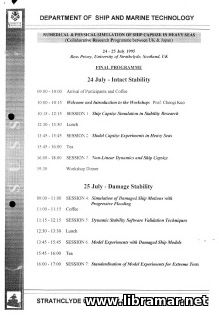 The purpose of this brief essay is to put into perspective ongoing research involving the simulation of intact ships in waves and wind, including conditions leading to capsize. A major challenge lies in the conversion of theoretical knowledge and numerical models to practical and useful information. One necessary condition for such knowledge transfer to be successful is a strong link between the research world and the "real" world, like ship operators and regulatory bodies.
In conjunction with the present Cooperative Research Navies project on Dynamic Stability, work has been carried out with the following objectives: modeling of capsize physics and risk analysis, development of "rational" design criteria, development of decision support tools (ship operation) improvement of training/education, The numerical simulation of ship capsizing and broaching plays a central role in this process. To establish confidence levels in the time domain tool developed in recent years, Quality Assurance is essential. This includes the development of QA procedures, benchmark tests, and validation through model tests and full scale data.
Without any further elaboration, I would like to mention that research is carried out along similar lines for damaged ships within the same navy framework. This work relies heavily on the methods and procedures developed for intact ships, as discussed below.
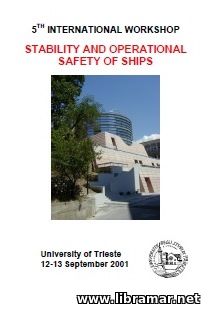 Another compendium of the articles relating to the latest developments in the ship stability and collected during the Fifth International Workshop dedicated to the stability and operational safety of the vessels. Among the topics covered by the programme of the conference there were wave environment monitoring, guidance to the heavy weather sailing and assessment of the risk of capsizing, case studies on SEM (static equivalent method), design of the fishing vessels in a regulation-driven environment, operational requirements and practical experience for the risk management under the conditions of marginal stability, newly developed methods of analysis of the ship and MODU dynamics in a realistic seaway, probability of capsizing of a vessel in random beam waves, model experiments to analyze damage stability of the ro-ro ferries, memory effect for prediction of the ship's capsizing and its importance, some of the newly established guidelines to conduct the HSC model tests, violent free surface flow, direct/parametric excitation analysis, numerical simulation, direct freak waves simulation, nonlinearity effect in yaw motion, non-ergocity of rolling motion of large amplitude, asymmetric surging and surf-riding etc.
|







